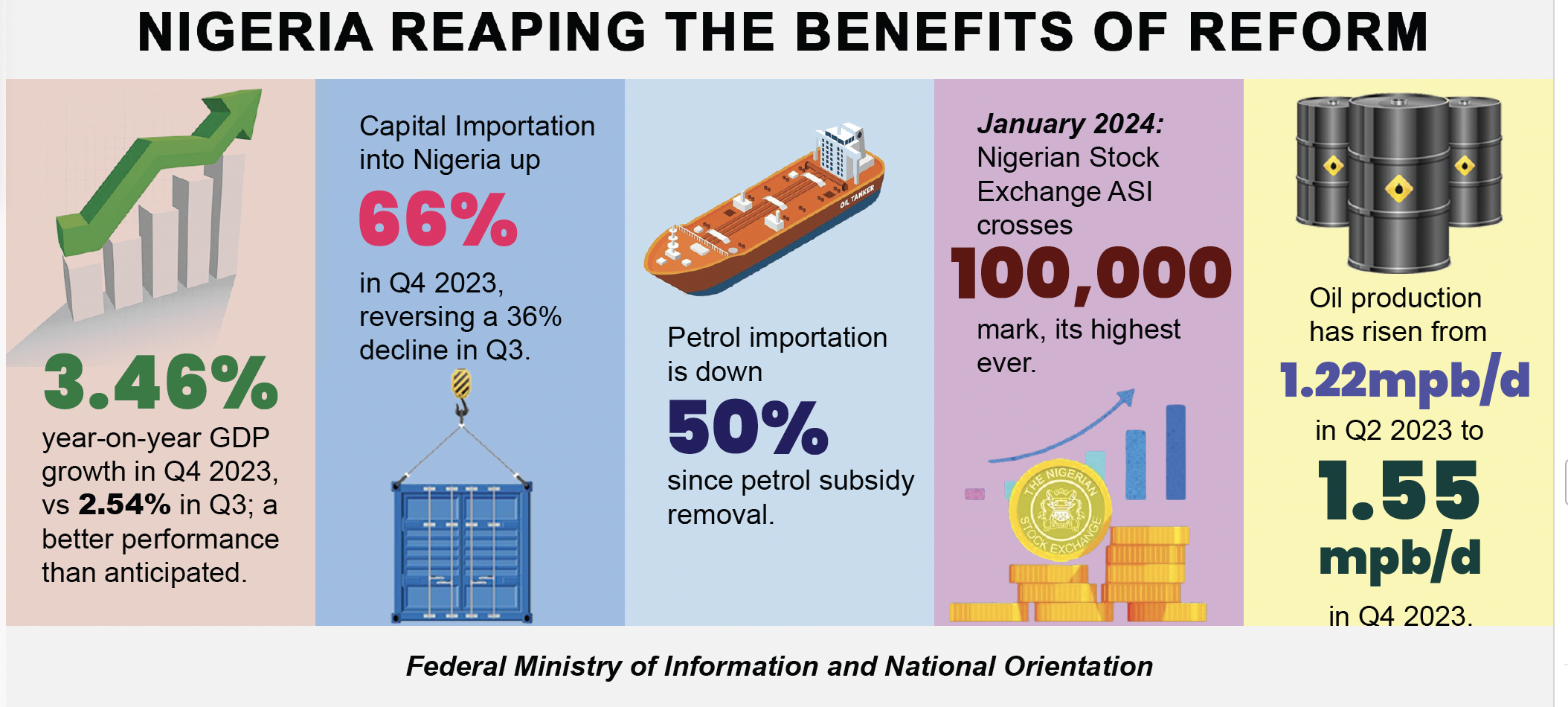Nigeria, one of the largest countries in Africa, with a total geographical area of 923,768 square kilometers and an estimated population of about 215 million, lies wholly within the tropics along the Gulf of Guinea on the western coast of Africa.
Nigeria has a diversified Agro-ecological area, which makes production of a wide range of agricultural products possible.
Hence, agriculture constitutes one of the most important sectors of the economy accounting for about 25 per cent of the nation’s Gross Domestic Product.
Despite Nigeria’s rich agricultural resource endowment, less than 50 percent of the country’s cultivable agricultural land is currently cultivated and this mainly by smallholder farmers, operating 0.5-2 hectares of farmlands. Smallholder farmers are constrained by several problems, including use of rudimentary production techniques, inadequate inputs, lack of access to finance and credit, low technical capacity, weak extension support, lack of irrigation and mechanisation equipment, poor infrastructure, inadequate access to markets, land and environmental degradation, inadequate research and extension services and so on, leading to low and suboptimal yields. Furthermore, the cost and efforts put into production are more than the farmers’ profit.

Accounting for more than 90 per cent of the supply of agricultural commodities to the tables of Nigerians, the factories of agro-processors and the export ships of the nation; and providing employment for about 70 per cent of the population; the importance of smallholder farmers cannot be overemphasised.
Table1: Agriculture indicators: Nigeria in comparison with select African countries
| Indicator/Country | Nigeria | Ghana | Kenya | South Africa |
| Agriculture contributions to GDP | 24.17%* | 21% | 19.59%** | 2.53%** |
| Total Land Area (Sq. Km) | 910,770 | 227,540 | 569,140 | 1,213,090 |
| Arable Land (% of Total Land) *** | 37.30% | 20.70% | 10.20% | 9.90% |
| Average Land Holding (Ha)*** | 0.85 | 2.56 | 0.86 | 94 |
| Contribution of Smallholder Farmers to Food Output | 90% | 80% | 63% | n/a |
| Yield Tons/Ha – (Rice) | 1.6 | 2.9 | 6.4 | 2.8 |
A comparison of agricultural primary production (farming) in Nigeria with comparative African countries shows a need for critical interventions in improving the competitiveness of Nigerian agriculture to move the sector from its current subsistent nature to a modern and commercially driven yet smallholder farmer inclusive form.
Despite having the second largest total land area and largest arable land size, Nigeria has the lowest average land holding sizes emphasising the high level of fragmented farming activities taking place across the country by smallholder farmers. With the highest population size, the country’s food supply is highly dependent on smallholder production at 90%, highest amongst the comparators and its productivity rate for an all-important staple such as Rice is lowest. With a teeming population, this situation throws in food security concerns over the next few decades if the status quo is maintained.
One of the critical strategies for achieving food security and realising an inclusive agro-led economic growth in Nigeria is the structuring of smallholder farmers into farming communities to achieve scale and mechanised/optimised production, harvest, processing, trade and markets. The Agro Geo-Cooperative Model introduced by NIRSAL Plc, under the leadership of Aliyu Abdulhameed, comes to mind as a commendable strategy for achieving this.
NIRSAL promotes optimised smallholder-inclusive agriculture and agribusiness activities through its Agro Geo-Cooperative Model, a farmer financing accountability system that evolves farmers from inefficient and non-financeable subsistence farming systems, to organised cooperative systems, structured enterprise systems and ultimately a farmer- based corporate system.
The NIRSAL AGC model ensures the capture of agricultural value at field level, and driven by the NIRSAL Mapping to Market Strategy, ensures effective and structured linkages of primary production (farming) operations to Input and Output Markets as required for integrated and economically thriving agricultural value chains. The full suite of the NIRSAL AGC model comprises the Input AGC, Farmer AGC, Trade AGC and Market AGC.
According to Aliyu Abdulhameed, NIRSAL Plc’s Managing Director/CEO: “The NIRSAL Farmer AGC model is an innovative solution that we created to de-risk primary production, through an aggregation of pockets of smallholder farmlands into a contiguous stretch of 10, 50 or 250 hectares jointly operated by the smallholder farmers to unlock productivity enhancements and enable access to sustainable finance and structured markets.”
The model addresses the current scattered and unstructured nature of farmers and primary production in Nigeria by structuring farmers and farmlands to attain the right scale with a view to increasing yield through the adoption of modern technologies.
The Farmer Agro Geo-Cooperative model also provides the much-needed structure for mechanisation, optimisation, improved yields and the flow of finance and investments into agricultural value chains.
Owing to the wholistic nature and approach of NIRSAL AGC Model, it is no wonder that Abdulhameed is confident that the model “will trigger an agro-economic revolution, particularly when integrated with Input, Trade and Market Geo-Cooperatives for higher economic value, increased exports, job creation and improved livelihoods.”

